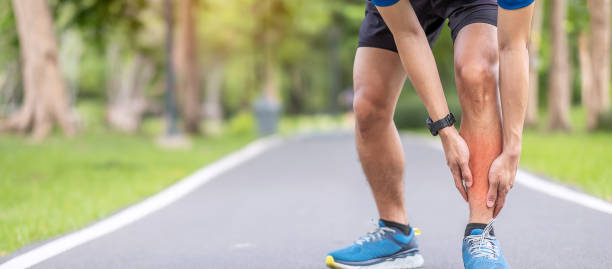Jogging is an excellent way to maintain fitness and overall health, but for some, it can lead to discomfort or pain in the shins. If you’ve ever experienced aching or throbbing sensations in your shins during or after jogging, you’re not alone. This article aims to delve into the reasons why your shins might hurt when you fly and provide insights into how to prevent and manage this discomfort effectively.
Common Causes of Shin Pain
Shin Splints
Shin splints, medically known as medial tibial stress syndrome, are a prevalent cause of shin pain among runners. This condition occurs due to excessive stress on the shinbone and the tissues attaching the muscles to the bone. Factors such as overtraining, improper footwear, or running on hard surfaces can contribute to the development of shin splints.
Stress Fractures
Stress fractures are tiny cracks in the bones caused by repetitive force or overuse, commonly seen in athletes engaged in high-impact activities like running. When jogging, the repetitive pounding on hard surfaces can lead to stress fractures in the shinbone, resulting in sharp pain during and after exercise.
Muscle Imbalance
Muscle imbalances, particularly between the calf muscles and the muscles in the front of the lower leg, can also lead to shin pain. Weakness or tightness in certain muscle groups can alter the biomechanics of the lower limb, increasing the strain on the shins during jogging.
Overpronation
Overpronation occurs when the foot rolls excessively inward while running, leading to misalignment of the lower leg and increased stress on the shinbone. Runners with flat feet or low arches are more prone to overpronation, which can contribute to shin pain if not addressed with proper footwear or orthotic support.
Importance of Proper Footwear
Choosing the right shoes for jogging is crucial for preventing shin pain and other lower limb injuries. A supportive and well-cushioned pair of running shoes can help absorb shock and reduce the impact on the shins during each stride. Additionally, replacing worn-out shoes regularly is essential to maintain adequate support and cushioning, as old or degraded shoes may no longer provide sufficient protection against impact forces.
Precautions Before Jogging
Before embarking on a jogging session, it’s essential to take some precautions to minimize the risk of shin pain and injury:
Warm-Up Routine
Performing a dynamic warm-up routine can help prepare your muscles and joints for the physical demands of jogging. Incorporate dynamic stretches and mobility exercises targeting the calves, shins, and ankles to improve blood flow and flexibility.
Gradual Increase in Intensity
Avoid sudden increases in mileage or intensity, as this can overload the muscles and bones in your lower legs, increasing the likelihood of shin pain and other injuries. Gradually build up your jogging distance and pace over time to allow your body to adapt and strengthen gradually.
Stretching Exercises
Incorporate regular stretching exercises, focusing on the muscles of the lower legs, into your post-run routine to help improve flexibility and reduce muscle tension. Pay particular attention to stretching the calf muscles, Achilles tendon, and muscles along the shinbone to alleviate tightness and prevent overuse injuries.
Techniques to Prevent Shin Pain
Strengthening Exercises
Include strength training exercises targeting the muscles of the lower legs, such as calf raises, toe taps, and resistance band exercises, to build muscular endurance and stability. Strengthening the muscles surrounding the shins can help distribute forces more evenly and reduce the strain on the shinbone during jogging.
Cross-Training Activities
Incorporate cross-training activities like swimming, cycling, or elliptical training into your fitness routine to reduce the repetitive stress on your shins from jogging. Engaging in low-impact exercises can help maintain cardiovascular fitness while giving your shins a break from the constant pounding of running.
Proper Running Form
Focus on maintaining good running form to minimize the impact on your shins and lower limbs. Land softly on your midfoot or forefoot with each step, rather than heel striking, to reduce the jarring forces transmitted up the leg. Additionally, keep your posture upright, shoulders relaxed, and arms swinging naturally to promote efficient and injury-free running mechanics.
When to Consult a Doctor
While mild shin pain is common among runners and usually resolves with rest and self-care, persistent or severe pain may indicate a more serious underlying condition that requires medical attention. Consult a doctor or sports medicine professional if you experience any of the following:
Persistent Pain
If your shin pain persists despite rest, ice, and over-the-counter pain medication, it’s important to seek medical evaluation to rule out more severe injuries or conditions.
Signs of Serious Injury
Seek prompt medical attention if you experience symptoms such as swelling, bruising, tenderness to touch, or difficulty bearing weight on the affected leg, as these may indicate a stress fracture or other acute injury requiring specialized treatment.
Importance of Professional Evaluation
A thorough evaluation by a healthcare provider can help diagnose the underlying cause of your shin pain and guide appropriate treatment and rehabilitation strategies. Depending on the diagnosis, treatment options may include physical therapy, orthotics, biomechanical analysis, or, in severe cases, surgical intervention.
Conclusion
Shin pain during jogging can be a frustrating and limiting issue for many runners, but with the right approach to prevention and management, it’s possible to enjoy pain-free running. By understanding the common causes of shin pain, investing in proper footwear, taking necessary precautions before jogging, and incorporating strength and flexibility exercises into your routine, you can reduce the risk of shin pain and stay on track with your fitness goals.

